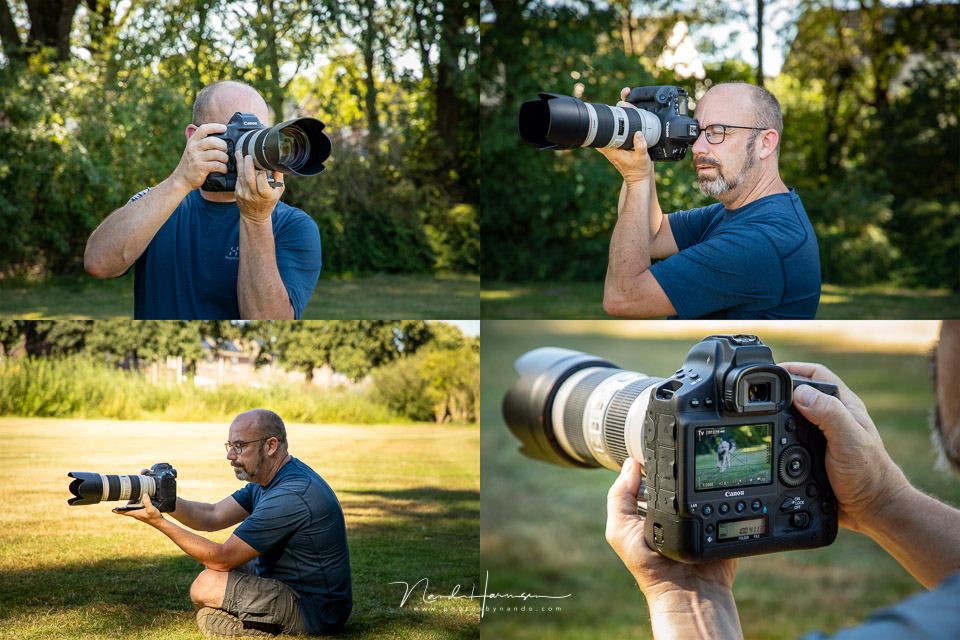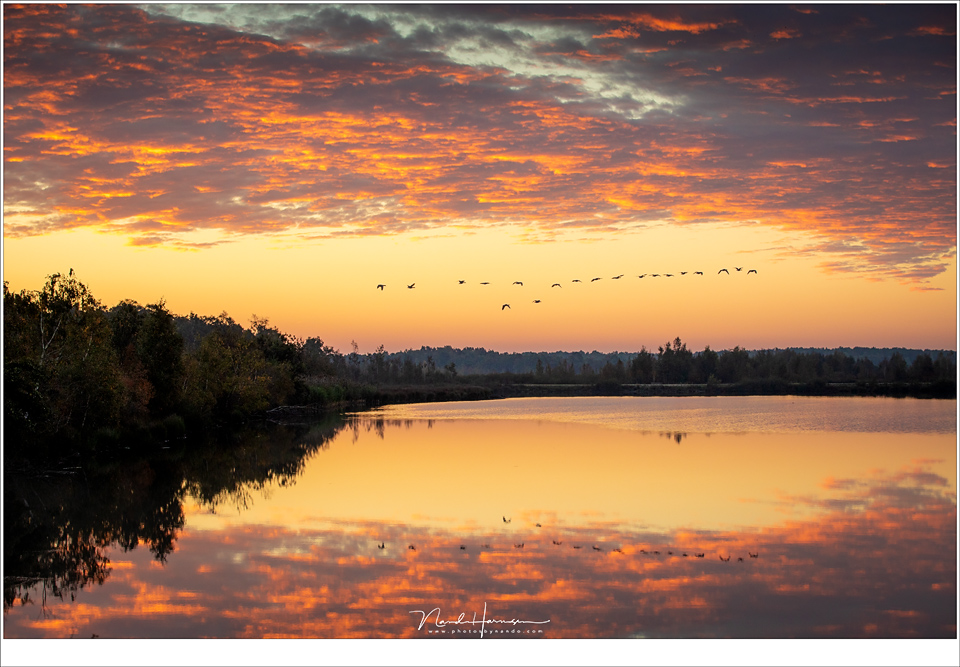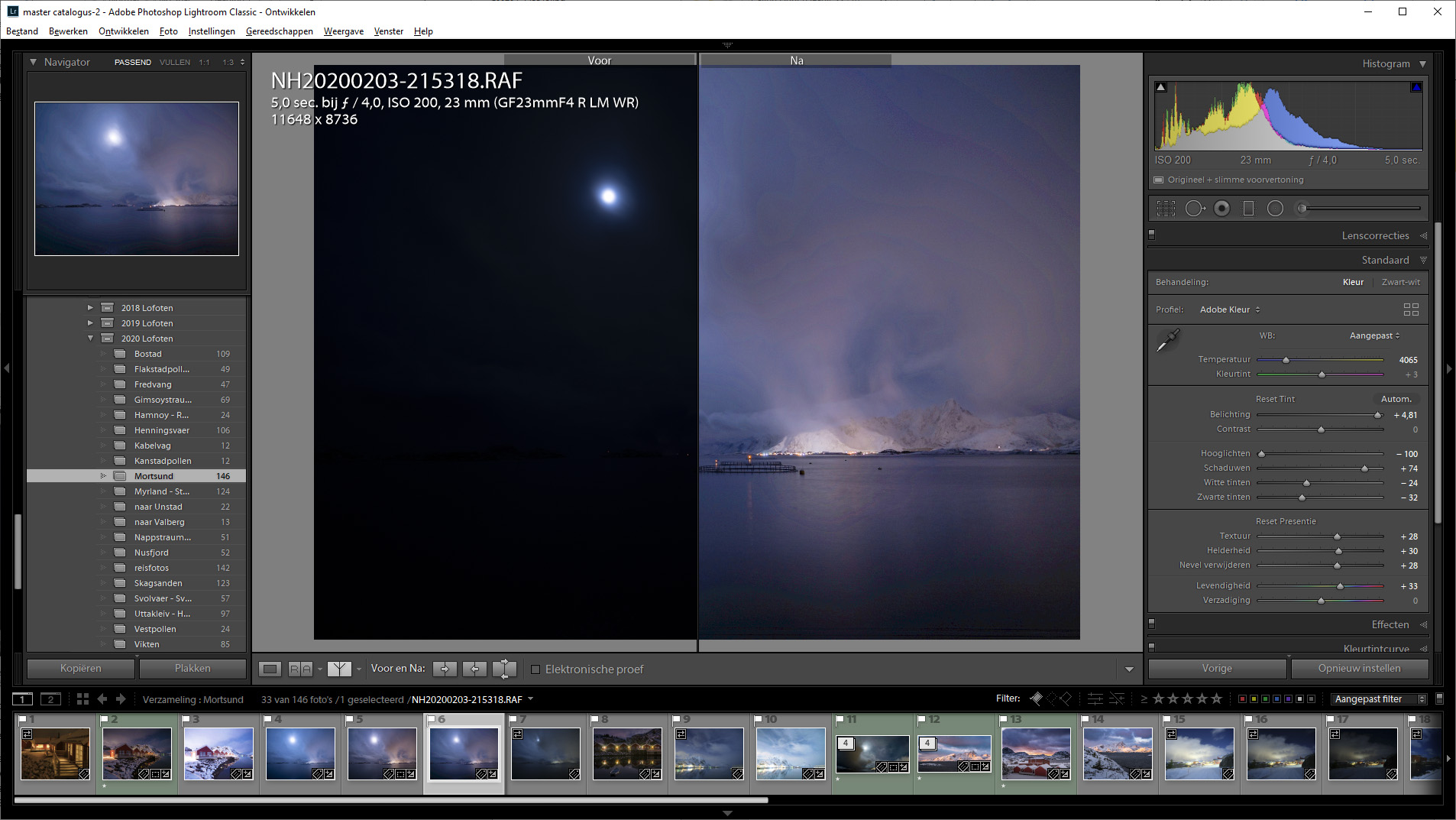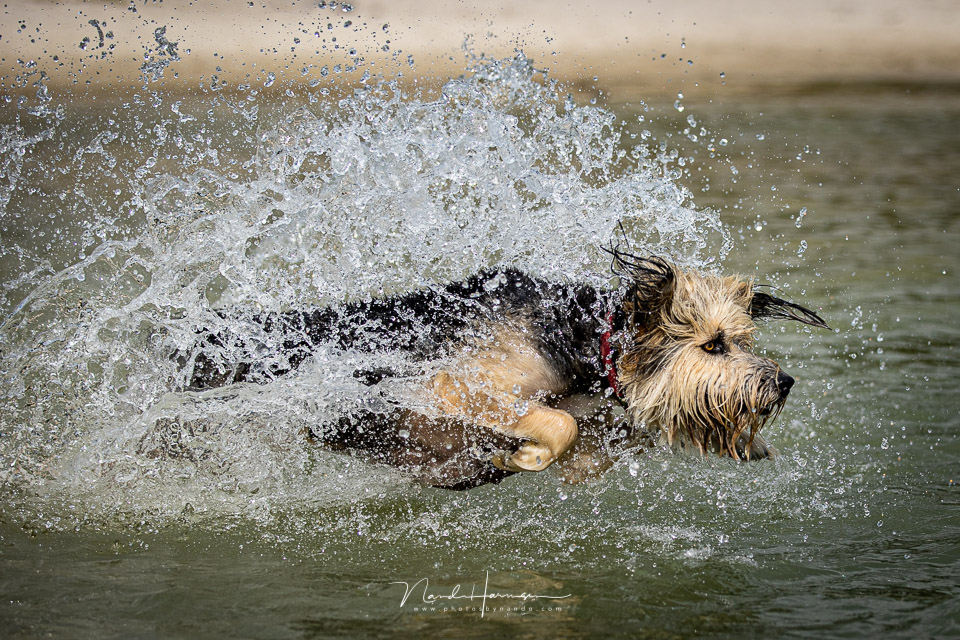When we do a search on the internet, we will find an enormous amount of tutorials and videos about photography. It is about settings, equipment, lenses, post-processing, and much more. These videos can be very helpful to achieve an end result. And that’s what matters.
A lot of photographers love to teach their way of photographing. And yes, I’m one of those photographers. Just like everyone else, I explain the way I use my equipment and how to post-process my footage. What I tell is my personal way of working, my own method. How I do things might be completely different compared to another photographer. In fact, everyone who is posting tutorials on the internet has his or her unique way of working.
All these different explanations might become confusing at times. This means you will probably use the method of the photographer whose work you admire.

I can only show the way I like to work, but perhaps there are also other methods to get the same result.
Has it ever occurred to you that it doesn’t matter how you use your equipment, your photography technique, or even the post-processing? It is the end result that matters. Perhaps your method or the one you have learned is not the easiest or most efficient way. As long as you end up with the image you like, that is what counts.
Example 1: The Use of Camera and Lenses
There is a lot to say about equipment. On every photography website, you can find reviews and advice on how to use cameras and lenses. If you are looking for a good camera or lens, it can be very difficult to find the best one for the job.

These are the ways I was holding this camera during a review. Perhaps someone else will hold a camera completely differently. It does not necessarily mean one way is wrong. It is just another method. (Photo credit: www.hetwie.nl)
Most of the times it doesn’t matter that much which camera you use. If your camera gets the job done, then it is a good one. Perhaps a certain camera has options that can make your life much easier, but don’t lose yourself in the never ending discussions about features and possibilities. Just go out and do the job. The moment you run into problems, which stand in the way of a good result, it is time for an upgrade.
Example 2: The Use of Camera Settings
Modern cameras have a lot of different available settings that can make the use of the camera much easier. But besides the sometimes exotic functions and possibilities, you need to have a correct exposure. It doesn’t make any difference if you use a manual or an automatic exposure setting. If your photo is exposed correctly and it has the depth of field you want, it is okay.
Perhaps there is also another way to get the correctly exposed photo. But even if you force yourself into using a method as explained by some tutorial or video, the photo won't get any better.

Which exposure method do you prefer?
This also applies to the use of autofocus settings. There is not one single perfect setting, but there are many different available that will work in your situation. Which one you should use depends on the tutorial you read or watched and your personal preferences. The only thing that matters is a sharp image. How you achieved this is of less importance.
Just make sure your preferred setting is working for you and enables you to achieve the wanted results. If you run into difficulties, your method may need to be fine-tuned.
Example 3: The Use of Filters
Some love filters, others don’t. I’m one of the landscape photographers that loves the use of filters. But it doesn’t necessarily mean filters will produce a better result. They are just a way of working, the method I prefer. Filters are never the only way of achieving the image I like, nor are they the perfect method. They are just one of the many ways to achieve the result you like.
Just think of it this way. The people who will look at the photo won’t care how the image is made. They just see a great photo. Only other photographers may want to know how it was done. Perhaps you have used exposure bracketing or you used the dynamic range capabilities of your camera. Or you have used filters to get the image you wanted. Either of these methods is a good method if the end result is to your liking, even if it is not the most efficient way.

Do you need to use filter or do you prefer no filters at all?
Example 4: The Use of Post-Processing Software
There are a lot of different ways to post-process your image. You can use the software provided by the manufacturer or one of the popular programs like Lightroom, Capture One, or Luminar. But no matter which program you use or how the program works, just make sure you get a good end result. How it is done or what software is used is of lesser importance.

There are many ways to post-process an image. Here, I make use of the dynamic range of this raw file, but perhaps a series of exposures would have worked also. Which one would you use? It doesn't matter if the end result is good.
Perhaps you use a method that takes you hours of work, while another method will do the same thing in just a couple of minutes. Just like I mentioned in the previous section, the client is just looking at the end result. It doesn't matter how that result is achieved.
Should You Forget About All Those Tutorials and Videos?
You might wonder if you shouldn’t waste your time on those tutorials and videos. If the path to the end result is of no importance, why should you listen to all that advice?
I'm convinced it is very wise to see how others work and how they achieve those results you like so much. Although the client will only care about the end result, other methods may show you an easier way or a quicker way, or perhaps they will show you a method that will increase the overall quality of your work.

Shooting fast action, your AF and exposure settings can differ from the ones I would use in such a shoot. If both give a good result, it doesn't matter what method you used.
That is why you should continue to read tutorials and watch videos. You might already know how to get the result, but you will still learn a thing or two. And for those who are so willing to share their way of photographing, continue to do so. It is great to help others improve their photography. Just remember, in the end, it is your result that matters, not the path towards it.
Do you read tutorials and watch videos about your photography? Do you feel you are still learning and evolving your photography? Are you sure your method is the best one available? Please share your thoughts in the comments below.







Great article and I completely agree! I’ve only just started getting serious about photography this June and started obsessing over videos and articles trying to find that magical combo and the perfect gear. What I’ve realized the last few weeks is my path is right for me, and I’m now spending more time shooting and learning how to edit them to get the look I want than watching and reading lol! Thanks for sharing, I haven’t posted yet but this really spoke to me.
Melanie
Ps: I wish my husband read books, if he did I’d get him a copy and hope the swearing slowed down when he’s working on his bike :)
Thanks for the comment, Melanie :)
It is not about gear technique or the final result. It is about the creative process that use elements of the mentioned resources.
That also
It doesn’t matter. Painting is art, photography is hobby. Do it the way that pleases you.
Why isn't photography also an art?
It is, for the few who care. Most people just care about cameras and lenses.
Sadly so...
Lee, I would consider your work art. Painting starts off as a hobby for many. Photography is not a hobby if you are making money selling it as art.
I was being sarcastic and was generalizing the current photography community. Most people focus too much on technicalities. How fast a lens focus, how amazing an eye focus system is, how little noise a sensor produce. Most camera review websites talk just about gear and few talk about art. For few who care, yes, photography is art.
I'm definitely not sellin', but I treat it as art...
Thanks for the constructive criticism, I’ll work harder
Who decides what art is? Well, it might be a bit more flexible...maybe?
U Wot? Photography is art you twit.
It is about your journey and everyone's is different. The camera is my excuse for being there sometimes. Other times it is just the challenge of creating something unique for my own personal satisfaction. I do not get to hung up with the tools, however, having lost thousands in the equipment, the tools are important. Except for some commercial work I try to shoot within the framework of what I own because just do not want to carry a ton of equipment around. Except when I need to accomplish some tasks with software do not spend much time with how someone else does something what fun is that.
No way. The end result is because of the path that lead to it.
Not necessarily... there are more than one ways to accomplish the same end result.
Different ways can lead to equivalent outcomes.
Who's to say that one path is better than the other when outcome is equivalent?
Develop your own style, then it doesn't matter what software, camera or phone you use. I agree, it's all about the results. :) - Just don't forget the print!
Yes, the prints... or books
Aside from the technical aspects involving a photo, the path I take to capture one definitely matters to me. The viewer may care less about what went into taking it, but I assure you that the photographer will. Especially when in the Ural Mountains in dead if winter at -45 f. Don't give a damn about my settings. Absolutely did care about the environment. As for me, I don't write or let anyone know what it took to make that shot, unless they are persistent. The path to make a photo can be extremely dangerous at times, especially for War photojournalists.
I agree, the photographer may find it important. But that is just a personal thing. For the rest of the world it isn't important at all. You mention the dangers of a war photojournalist. Even if it is extremely dangerous, it won't make the image better by definition.
Yes...it is only important to the photographer. But I have noticed recently that people do ask how a photographer got a certain photo or two. One in specific....a photo of a bird who's nest was on a cliff. The shot included the nest with a baby bird peeking out and the cliff under it with a wonderful view. I imagine many people would be interested in how that was taken. As for the war photojournalist...I never said that those situations would make any image better. Just that the path to making the image is dangerous.
Ah, I understand. Thanks for clarifying
So I'm not going to go into the ZEN thing. I have to agree with you Nando, it is the path or journey one takes to get to the end result. I for one call my self a armature picture taker, one who has watched and follows many professional picture takers and listen to their advise, never hurts to listen and learn from anyone who has more experience than you. It's like being a father and teaching your child your way of doing something and yet down the road they find their own way that suites them better. They say you can't teach an old dog new tricks and yet everyday I learn something new and exciting when listing to others. I will admit that I watched a ton of reviews prior to making the investment into yet another DSLR and glass. Is this not the reason we use the internet so we can share and learn, tech and be taught. Now since I do not do photography living, I will just say this that my end results are mine and if someone doesn't like it, well to bad. I am an artist by profession, I work with concrete, stele, wood and different resins. I have have taught my talent to a few others, not all my secrets though, that is for them to figure out and develop their own skill set. Like you say, as long as the end result is satisfactory and how we got there is our way, not your way. I say this to everyone who reads this, keep doing what you do and take someone under your wing, share some advice and boost their spirts, this way they will find their path and you can say that you helped that person get that awesome result.
Wahala for who no like the result.